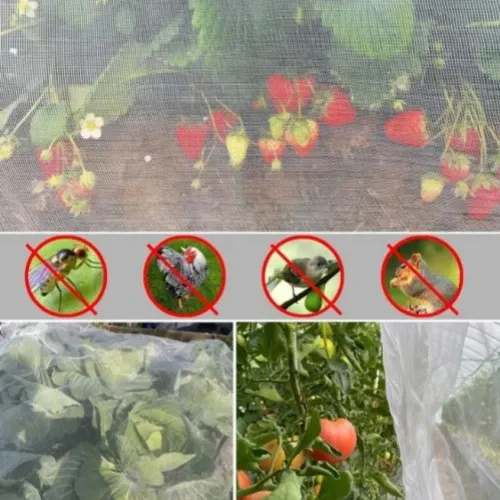-
 Afrikaans
Afrikaans -
 Albanian
Albanian -
 Amharic
Amharic -
 Arabic
Arabic -
 Armenian
Armenian -
 Azerbaijani
Azerbaijani -
 Basque
Basque -
 Belarusian
Belarusian -
 Bengali
Bengali -
 Bosnian
Bosnian -
 Bulgarian
Bulgarian -
 Catalan
Catalan -
 Cebuano
Cebuano -
 China
China -
 Corsican
Corsican -
 Croatian
Croatian -
 Czech
Czech -
 Danish
Danish -
 Dutch
Dutch -
 English
English -
 Esperanto
Esperanto -
 Estonian
Estonian -
 Finnish
Finnish -
 French
French -
 Frisian
Frisian -
 Galician
Galician -
 Georgian
Georgian -
 German
German -
 Greek
Greek -
 Gujarati
Gujarati -
 Haitian Creole
Haitian Creole -
 hausa
hausa -
 hawaiian
hawaiian -
 Hebrew
Hebrew -
 Hindi
Hindi -
 Miao
Miao -
 Hungarian
Hungarian -
 Icelandic
Icelandic -
 igbo
igbo -
 Indonesian
Indonesian -
 irish
irish -
 Italian
Italian -
 Japanese
Japanese -
 Javanese
Javanese -
 Kannada
Kannada -
 kazakh
kazakh -
 Khmer
Khmer -
 Rwandese
Rwandese -
 Korean
Korean -
 Kurdish
Kurdish -
 Kyrgyz
Kyrgyz -
 Lao
Lao -
 Latin
Latin -
 Latvian
Latvian -
 Lithuanian
Lithuanian -
 Luxembourgish
Luxembourgish -
 Macedonian
Macedonian -
 Malgashi
Malgashi -
 Malay
Malay -
 Malayalam
Malayalam -
 Maltese
Maltese -
 Maori
Maori -
 Marathi
Marathi -
 Mongolian
Mongolian -
 Myanmar
Myanmar -
 Nepali
Nepali -
 Norwegian
Norwegian -
 Norwegian
Norwegian -
 Occitan
Occitan -
 Pashto
Pashto -
 Persian
Persian -
 Polish
Polish -
 Portuguese
Portuguese -
 Punjabi
Punjabi -
 Romanian
Romanian -
 Russian
Russian -
 Samoan
Samoan -
 Scottish Gaelic
Scottish Gaelic -
 Serbian
Serbian -
 Sesotho
Sesotho -
 Shona
Shona -
 Sindhi
Sindhi -
 Sinhala
Sinhala -
 Slovak
Slovak -
 Slovenian
Slovenian -
 Somali
Somali -
 Spanish
Spanish -
 Sundanese
Sundanese -
 Swahili
Swahili -
 Swedish
Swedish -
 Tagalog
Tagalog -
 Tajik
Tajik -
 Tamil
Tamil -
 Tatar
Tatar -
 Telugu
Telugu -
 Thai
Thai -
 Turkish
Turkish -
 Turkmen
Turkmen -
 Ukrainian
Ukrainian -
 Urdu
Urdu -
 Uighur
Uighur -
 Uzbek
Uzbek -
 Vietnamese
Vietnamese -
 Welsh
Welsh -
 Bantu
Bantu -
 Yiddish
Yiddish -
 Yoruba
Yoruba -
 Zulu
Zulu
protection net for plants
Protection Net for Plants A Shield Against Adversities
In the realm of agriculture and gardening, safeguarding plants from various threats is paramount for ensuring healthy growth and optimal yields. One innovative solution that has garnered attention is the protection net for plants. These protective coverings serve as a vital line of defense against environmental threats, pests, and diseases, enabling farmers and gardeners to cultivate their plants successfully.
Protection nets, also known as plant nets or crop nets, are typically made from durable materials such as polyethylene, polypropylene, or nylon. They come in various sizes and mesh densities, allowing them to cater to different plant types and growth stages. The primary purpose of these nets is to provide a barrier that prevents harmful elements from adversely affecting plant health.
Protection Net for Plants A Shield Against Adversities
Moreover, protection nets play a crucial role in safeguarding plants from extreme weather conditions. With climate change leading to more unpredictable weather patterns, plants are often exposed to harsh elements like hail, strong winds, and excessive sunlight. A protective net can act as a barrier against hailstones, preventing physical damage to leaves and fruits. It also helps in moderating sunlight exposure, allowing filtered light to reach the plants while reducing the risk of sunburn on delicate foliage.
protection net for plants

In addition to pest control and weather protection, these nets can also be beneficial in creating a microclimate that promotes plant health. By trapping moisture and maintaining temperature around plants, protection nets can enhance growth rates, especially in sensitive seedlings and young plants. This is particularly beneficial for regions with fluctuating temperatures, as the nets provide a stable environment that fosters optimal growing conditions.
Easy to install and manage, protection nets can be employed in various agricultural systems, including orchards, vegetable gardens, and greenhouse settings. They are often designed with versatility in mind, allowing growers to adapt their use to specific crops and local conditions. Regular maintenance, such as checking for damages and ensuring proper tension, can extend the lifespan of these nets, making them a cost-effective solution in the long run.
Some may argue that the initial investment in protection nets could be a barrier for small-scale farmers. However, the long-term benefits—ranging from higher yields and reduced pest management costs to less crop loss due to weather events—often outweigh the upfront expenses. In fact, many farmers who have embraced this technology report increased profitability and sustainability in their agricultural practices.
In conclusion, protection nets for plants are indispensable tools for modern agriculture. They provide a multifaceted approach to protecting crops from pests, adverse weather, and diseases while enhancing overall plant health. As the agriculture sector continues to evolve, integrating such innovative solutions will be essential in addressing the challenges posed by climate change and food security. By adopting protection nets, farmers not only safeguard their livelihoods but also contribute to a more sustainable and resilient agricultural future.
-
Shipping Plastic Bags for Every NeedNewsJul.24,2025
-
Safety Netting: Your Shield in ConstructionNewsJul.24,2025
-
Plastic Mesh Netting for Everyday UseNewsJul.24,2025
-
Nylon Netting for Every UseNewsJul.24,2025
-
Mesh Breeder Box for Fish TanksNewsJul.24,2025
-
Expanded Steel Mesh Offers Durable VersatilityNewsJul.24,2025











